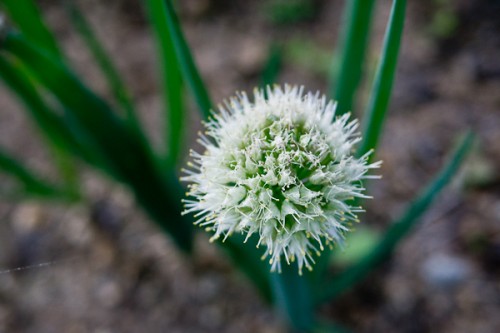If sati, mindfulness, is not there in ordinary life, it is not working. If it is only there on retreat, and absent in your daily life, this is also problematic. What makes this integration so difficult is that taṅhā, desire or craving, is not just something added to our experience: It is literally built into our cognitive process. We are, if you will, born with the pathology of desire.
 Part I: The Pathology of Desire
Part I: The Pathology of Desire
Craving, or taṅhā in Pali, is the central problem identified by the Buddha. Discourses on craving are scattered throughout the Pali Canon, both in the Sutta Pitaka and the Vinaya Pitaka, the rules of training for monastics. There is one striking example of craving, and how not to deal with it, that we find in the Vinaya. It concerns monks who couldn’t deal with their sexual desires. These monks, when the Buddha was away, castrated themselves. When the Buddha comes back, he says to them, “I tell you to cut off one thing, and you cut off something completely different!”
That tells you both how difficult the problem is, and how an extreme ascetic response to ordinary desires and cravings can go wrong. But craving is the problem, and the Buddha identifies several different forms of craving, some as obvious as sexual desire, but many much more subtle.
The Buddha’s practical advice is to train ourselves to observe the dynamic process of desire, so that by seeing it we will be lead to a cure.
Three forms of craving
 The Buddha diagnoses three forms of taṅhā, which will be detailed in a moment. Craving from sensual desire, kama-taṅhā, is only the most obvious one. He develops a dynamic formula of taṅhā, and demonstrates that craving is one of the most basic, ubiquitous drives in human life. This insight into taṅhā shows us the internal tensions and torsions that give birth to the self. The whole notion of taṅhā is productive of self: that which “I” crave to have, and that which “I” crave to avoid.
The Buddha diagnoses three forms of taṅhā, which will be detailed in a moment. Craving from sensual desire, kama-taṅhā, is only the most obvious one. He develops a dynamic formula of taṅhā, and demonstrates that craving is one of the most basic, ubiquitous drives in human life. This insight into taṅhā shows us the internal tensions and torsions that give birth to the self. The whole notion of taṅhā is productive of self: that which “I” crave to have, and that which “I” crave to avoid.
We appear to be most ourselves when we want something or do not want something: when we are salivating over something in the window of a shop, for example, or desperately trying to avoid something. Yet, in times of repose and relaxation, in times of genuine absorption into a task, there might be very little self there. So the Buddha is building on a basic model that actually, a lot of the time, we lose our selves. There is no great self emerging all the time. I can be doing a task and all of the sudden say “I do not like this; this is boring.” Then, there “I” am. Equally so when I’m wanting or desiring something: There “I” am again.
From the Dīgha Nikāya:
“Desire is threefold: namely, desire for sense pleasures,
desire for becoming and desire for non-being.”
So we have kama-taṅhā, bhava-taṅhā, and vibhava-taṅhā. Kama-taṅhā is the desire for sense pleasures. The second, bhava-taṅhā, is the desire for being or becoming, whilst vibhava-taṅhā is the desire for non-being, or not becoming.
Kama is usually identified in the texts with the five senses, and includes sexual desire. Sense desire, however, is to do with the six senses as well: Everything we can touch and taste and smell and so on, and all the ways we have of gratifying our senses. We can also take desire in mental sense objects: “Wasn’t that a nice thought.”
“Sense desire” does not mean simply “we have senses;” it refers primarily to the ultimately endless un-quenchable craving for sensory stimulation. It is often likened in the texts to a torrent of water, gushing out from us all the time, this desire for sensual things: a nice cup of coffee, nice clothing, whatever it might be.
Bhava-taṅhā is different, in a sense, it is you on a good day, in that you want to be you, perhaps forever, or wish some state to continue. In its most extreme form, in religious and philosophical thinking, it can pan out in terms of the idea of immortality. So it is actually linking to the craving or grasping after something immutable within us, which we feel constitutes our reality, or our self—it is this that you desire to go on forever.
It is also the craving for novelty, innovation, new phenomena. You are craving to become this and that, in a round of endless stimulation, linked very much with kama-taṅhā. We are always looking for the new thing that is going on. “Where’s the new teaching going on?”
The desire not-to-be, vibhava-taṅhā, is seen as further down the chain. One of the main and tragic aspects of vibhava-taṅhā is the drive toward suicidality. This is an important dimension of vibhava-taṅhā that gives rise to the desire to “annihilate” both self and other and manifests as aggressive and self-destructive impulses.
Craving and clinging: feeling the fire
Taṅhā has a soul-mate that goes under the name upādāna. This fascinating word in Pali has all sorts of meanings that the Buddha plays with. He uses it directly to indicate the tendency “cling” and “grasp.” But there is a subtext that he’s playing on as well related to the Ancient Indian religious context.
Ancient India was a highly ritualistic society. As a Brahmin in Ancient India, you would be required to perform ritual sacrifices in fires on a daily basis. These were propitiatory rites towards gods and goddesses who were thought to control the destiny of the universe. This seems very simplistic, but this is basically what ancient Vedic belief was about, a highly ritualistic form of religious practice, centered around sacrifice.
At this period three sacrificial fires had to be kept burning in the temple, with at least one fire kept burning in the household. The act of refueling your fire, which must not be allowed to go out, was termed in Vedic Sanskrit upādāna: You kept on fueling your fire by laying more wood on it. Upādāna, therefore, was seen as the act of fuelling a material process.
The Buddha turns this into a metaphor. There are three fires, says the Buddha: greed, aversion and delusion. Glenn Wallis in his book The Basic Teachings of the Buddha uses the word “infatuation” for greed, which I like because of its resonances. What do we do to keep our “three fires” burning? We feed them by the continual act of grasping.
You can be clinging to the desire to get something you want, or to the idea that you can avoid something, or to grasping after views. Another meaning of upādāna refers to the image of flame clinging to a log in a fire. There are many images of fire referred to in the texts, and they are usually contrasted with “cooling”, which is a synonym for nibbāna. So one who has been awakened is cooled; it does not mean they’re cold, it just means that the fires of greed, aversion and delusion are no longer operative.
Taṅhā and upādāna arise as a complex, and they infect every ordinary perceptual moment in some form or another. In analysis we think of them as being two things, but grasping and clinging are two aspects of one process; you cannot really divorce them.
Essences & the illusion of thing-hood
Upādāna, this whole notion of clinging, leads to the question as to what, exactly, we are clinging to? It appears as if we are attempting to cling to some “essential” element of the object or the person—that which constitutes the “reality” of thing, person, situation, idea etc.
I really want to stress this, because when we think about essences we may think, that it is terribly philosophical, and therefore not very important for practice. It is, however, actually almost the instinctive feeling that whatever quality, that you think the object or the person etc., possesses, is possessed intrinsically.
So when I say, “Here’s my beautiful vase,” it is not as if the beauty is adventitious; it is as if the beauty is in the object itself. A lot of contemporary society works on fostering that idea, that there is an innate kind of beauty, everything that is subjective appears to be objective.
Most of us know that beauty is purely subjective, but when it is our beautiful object, it is somehow objective: “Look how beautiful my vase is!” It seems to be coming from the side of the object itself, not something that we are projecting into it. Yet, if you go to an art gallery, you will note that there is a historical view of beauty and that people’s idea of the “beautiful” changes through the centuries. What is “beautiful,” therefore, turns out to be a very subjective notion, and beauty is but one example of that which we consider to be “essential.”
This becomes even more worrying in the field of human ethics. Because if the intrinsic reality of a person is perceived to be goodness or badness, or ugliness or evil, or whatever it might be, somehow, it is implied, there is no possibility of it being changed: That is their intrinsic reality. When horrific things are being done, there is often the notion of “evil” bandied around, as if the perpetrator of these terrible actions somehow intrinsically possessed this quality. So, we end up “clinging” to the notion of this person as “intrinsically” evil.
Essence: bait in the desire trap
Grasping/clinging is built right into our cognitive process. We only become aware of things in terms of what we take to be hidden essences behind them. So we are grasping after some chimerical entity that is meant to inhabit the object, or person, because we feel it will satisfy us. It does not sound very polite, but actually that is the way we treat people: objects of beauty, objects of wisdom, all of the projections that we throw onto others.
“In the world, inclusive of its gods, substance is seen in what is insubstantial.” Even just that phrase that the Buddha offers becomes the launching pad for the whole discussion in later Mahāyāna Buddhist thought of emptiness, śūnyatā (Sanskrit). If you want the classic lines on insubstantiality, it is the opening of the Heart Sutra: “Form is emptiness, emptiness is form. Form is nothing other than emptiness, emptiness is nothing other than form.” In a way, that is picking up on this idea that “substance is seen, and when it is seen it is insubstantial.” But that does not mean that it does not exist. What it means is that it does not possess the essential qualities that we grasp after, in any substantive sense.
So the Buddha goes on, “Tied to their psycho-physical beings, and so they think that there is some substance, some reality in them.” These means are tied to our modes of perception, and often-malfunctioning perceptions, at that. This is why we are led to think there is some kind of substance within the things that we have.
“But whatever be the phenomena through which they seek their self-identity.” That is a very telling phrase. Basically the substances of the world and the things that we have are the things we seek our self-identity through: “acquisition,” “having,” staking a sense of self-identify by this. Say I’m a collector, surrounding myself with beautiful objects: Somehow, I get to feel more “real” through the objects that I possess.
This is true of people, too. If a person does something good for us, we may decide they are a intrinsically a good person. However, even if they later perform several bad actions toward us, we may still cling to the original perception. The opposite occurs, perhaps more often: If the “bad” person later performs several good actions, we might be led to think something like this: “What are they trying to get out of us?” In either instance the clinging to some “essential” reality blocks and obfuscates any real possibility of “vision.”
Tan;dhā, dukkha, & the Four Is-nesses
Taṅhā and upādāna are triggering mechanisms that reproduce fictions and suffering: dukkha in all of its myriad forms. As the Buddha says, “The world lacks and hankers. Beings are enslaved by their own greed.” [DN 2.16] After a very careful study of the symptoms, the Buddha tracks the pathology behind dukkha to its source: taṅhā. This is what I’ve been referring to as the pathology of desire. It is the cessation of this that the Buddha refers to in the third of the Ennobling Truths.
It is worth pointing out that “ennobling truths” is a much better translation of the term ariya sacca, usually translated as Noble Truths. One of the great Pali scholars in England, K. R. Norman, (Emeritus Professor at Cambridge University) argues in his A Philological Approach to Buddhism, that out of all the possible translations you could ever have for ariya sacca, “four noble truths” is the very worst. Glenn Wallis, another scholar, points out that the Buddha does not use ariya sacca in many places, and that when he does, he is using it as a rather pointed piece of humor against the Brahmins, who consider themselves the Noble Ones, in that they teach the Truths of the Vedas, which are considered to be revealed truths.
The Buddha is basically saying if you want to know about noble truths, I’ll give you four things that exist: dukkha, its cause, its ending, and the path to its ending, which are ennobling if one investigates them. You are not ennobled by “truths,” you are ennobled by investigating truth. Once again the Buddha inverts things in order for us to see them differently:
“Dukkha is.
“The cause of dukkha is,
“The ending of dukkha is a reality, and
“There is a path to the eradication of dukkha.”
“This is the Ennobling Truth of the stopping of dukkha. The utter passionless stopping of taṅhā. Its renunciation, its surrender, its release, and the utter lack of pleasure in it.”
That is a powerful statement about renunciation—you have to want to give it up, to see there is no real pleasure in taṅhā. When you start to see the effects of taṅhā, our complete enthrallment to it, and the fact that it keeps on producing dissatisfaction, why would you take pleasure in it?
Nirodha: ending the leaking of the āsavas
There really isn’t any difference between nibbāna and cessation, nirodha, the word used in the Third Ennobling Truth. They’re two different words pointing at the same thing. For nirodha the literal meaning is “to stop leaking.” Obviously this implies that before this ceasing to leak, there is leaking going on. What we are leaking is the āsavas.
The Buddha takes this term āsava from Jainism—an Indian tradition of beliefs contemporary with that Buddha, which still exists today—where it means “influxes,” the things that come in and weigh down the atman, or soul, stopping it from attaining release. The Jain idea is to avoid action of any sort, good or bad, because it literally weights the soul down in saṃsāra.
The Buddha reverses the meaning and directionality, so instead of something coming in, what is keeping the not-self (anattā) bound to certain forms of behavior is what’s flowing out, not what is coming in. It is the asavas, that are flowing out of us. Thus we read of “outflows,” or “taints;” “effluents” is also a reasonable translation and picks up many of the resonances in the way the Buddha uses the term.
The first one is avijjāsava, the āsava of ignorance, or confusion, which flows out of us; the second is kāmāsava, the āsava of sensual desire; the third is called bhavāsava, the asava of becoming. There is a fourth one often added, diṭṭhāsava, the āsava of views. The unedifying picture I think the Buddha is giving us is one of “radical incontinence”, in relation to ignorance, sensual desire, becoming, and opinions. We just cannot keep this stuff to ourselves!
There is a synonym for someone who has attained the state of arahantship, which is khināsava, somebody who has brought an end or cessation to the āsavas. The word rodha often means to shore up something. So when the Buddha spoke about nirodha to ordinary people, in a paddy-field economy (in Bihar, where the Buddha was mostly teaching, they have got a lot of rice fields), what they heard in that metaphor was to shore up your paddy fields from leaking all the effluent or manure you would put in it to grow your rice. The Buddha also uses the word bhāvanā, “cultivation,” for meditation: You are cultivating your fields.
From āsavas to hindrances
There is a lineage, if you will, from the āsavas to the hindrances (sense desire, ill-will, sloth-topor, restlessness, and doubt; these are usually taught as the impediments to mindfulness in meditation). The āsavas are the deeply buried part of the iceberg, underwater. What we see is the tip of that, the hindrances. The word nivāraṇa, the Pali for the hindrances, has the implication of veiling: The hindrances veil reality. When I’m in the sway of kamacchanda, the first of the hindrances, sensual desire, it is as if there is a cloth over an object, so that all I can see is my desire for it. Similarly with aversion, vyapada, there is a blocking of our vision.
Whereas the Four Noble Truths don’t appear to be mentioned in one of the oldest strata of the texts, the Sutta Nipata, the āsavas are mentioned throughout. These are the ways we try to cope with life: sensual desire, becoming, views, and willful ignorance or confusion: not wanting to know and see the way things really are. This does not make us bad people, simply confused people. Out of confusion, we engage in unwholesome activities.
The āsavas are primary drives throughout life and thus appear to be something like “human nature.” The Buddha is talking about tracing a way of bringing an end to the āsavas. The only way to do that is to start with its proximal manifestation in our lives: taṅhā. Because we have desire or craving, we automatically have aversion. So if we can bring about a cessation of desire we may also bring about a cessation of aversion. After all, they’re only relative terms.
Why is it that people hanker for material goods, even once they have attained a level of prosperity, with enough food, with decent housing, enough clothing, and so on? Because of a sense of lack—a hole in your being that you desire to fill up with something. So we reach for the most obvious thing that is going to give us a sense of satisfaction, contentment.
There is disbelief that it is not going to do the trick at some point, so you end up with a house full of stuff, or a head full of knowledge. It is a kind of collecting mania: always one more thing to have, to know, one more piece of music to listen to, one more piece of cinema that you might have missed. You can even be a retreat junkie: Life is being on retreat; nothing else matters. The more retreats I do, the better I am. But it does not necessarily carry over into the rest of your life, partly because of resentment about not being on retreat.
Glimpses of nirodha/nibbāna in daily life
The Buddha uses the term nibbāna, which we think of as the summum bonum of the Buddhist path, as the total cessation, or non-inflammation, of craving. When we are no longer bound to the summons of desire, craving, or taṅhā, there is a spontaneous upsurge of feelings of dispassion towards oneself, and at the same time, compassion towards others. Compassion works on dispassion.
Often in Buddhist circles we do not talk about the fact that we can have experiences of nibbāna in ordinary life. We can have moments of nirodha, cessation, when craving is absent, when we are no longer bound to it. We get focused on the first two of the Four Noble Truths, which of course is vital, but we can end up just talking about that. The Third Noble Truth, cessation/fruition, is when you start to get it. You might get it for a few seconds, but those seconds are transformative. If that happens a number of times, it can become embodied in our sense of being in the world. None of this means anything if it is just head stuff; it has got to be embodied. Then it becomes a revolution in our ways of knowing and understanding the world.
We are aiming at coming to an experience of life as process, a process of psychological activities: Feeling and perceiving ultimately unfettered by concepts and signs. Freedom from craving makes consciousness non-representative. We do not keep on representing things to ourselves in particular ways that are “for me.” It is actually something that Meister Eckhart, the Christian mystic, talks about as gelassenheit, “letting be.”
~ ~ ~
This article is based on teachings by John Peacock at BCBS in September 2011.


